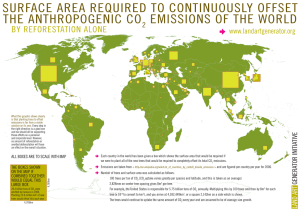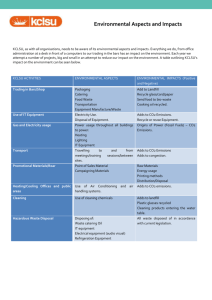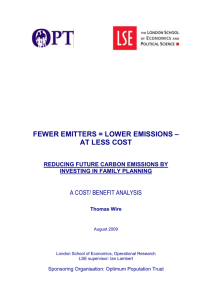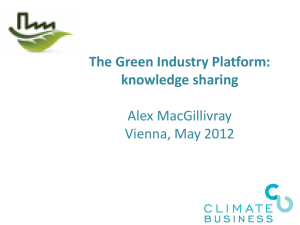Ashton Going Carbon Neutral Project
advertisement
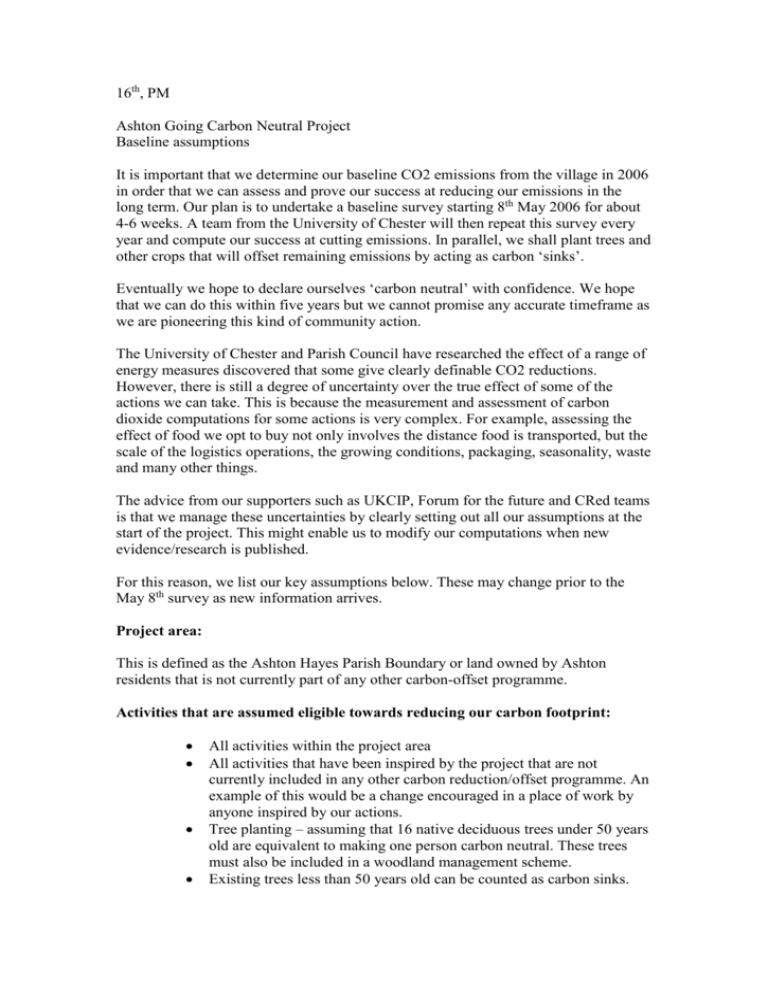
16th, PM Ashton Going Carbon Neutral Project Baseline assumptions It is important that we determine our baseline CO2 emissions from the village in 2006 in order that we can assess and prove our success at reducing our emissions in the long term. Our plan is to undertake a baseline survey starting 8th May 2006 for about 4-6 weeks. A team from the University of Chester will then repeat this survey every year and compute our success at cutting emissions. In parallel, we shall plant trees and other crops that will offset remaining emissions by acting as carbon ‘sinks’. Eventually we hope to declare ourselves ‘carbon neutral’ with confidence. We hope that we can do this within five years but we cannot promise any accurate timeframe as we are pioneering this kind of community action. The University of Chester and Parish Council have researched the effect of a range of energy measures discovered that some give clearly definable CO2 reductions. However, there is still a degree of uncertainty over the true effect of some of the actions we can take. This is because the measurement and assessment of carbon dioxide computations for some actions is very complex. For example, assessing the effect of food we opt to buy not only involves the distance food is transported, but the scale of the logistics operations, the growing conditions, packaging, seasonality, waste and many other things. The advice from our supporters such as UKCIP, Forum for the future and CRed teams is that we manage these uncertainties by clearly setting out all our assumptions at the start of the project. This might enable us to modify our computations when new evidence/research is published. For this reason, we list our key assumptions below. These may change prior to the May 8th survey as new information arrives. Project area: This is defined as the Ashton Hayes Parish Boundary or land owned by Ashton residents that is not currently part of any other carbon-offset programme. Activities that are assumed eligible towards reducing our carbon footprint: All activities within the project area All activities that have been inspired by the project that are not currently included in any other carbon reduction/offset programme. An example of this would be a change encouraged in a place of work by anyone inspired by our actions. Tree planting – assuming that 16 native deciduous trees under 50 years old are equivalent to making one person carbon neutral. These trees must also be included in a woodland management scheme. Existing trees less than 50 years old can be counted as carbon sinks. The carbon footprint reducing actions of switching over to green energy, providing that the supplier has not already sold the carbon credit. Changes in the actions of visitors that result in less greenhouse gas emissions. Any changes in travel and transport that are made by residents as a result of the project information and support. That energy crops such as Miscanthus (elephant grass) and willow absorb the amounts of CO2 stated by DEFRA. For simplicity, we shall also assume that: Purchase of locally grown food (within approximately 30 miles) is preferable. Purchase of seasonal food is preferable over imported out-of-season produce. Vehicle emissions/km or litres of fuel are those published by the UK Government. That heating boilers and white goods are functioning at their published levels of efficiency. That the EST’s HEC domestic survey criteria are the best available. That we can assume ‘average’ housing energy characteristics by taking a representative sample of houses in Ashton Hayes. For example, we may need to assume average ‘loft insulation’ thicknesses and cavity wall installations for all village properties. Certain actions, such as walking, cycling or taking the train instead of driving have fixed CO2 benefits per mile.
